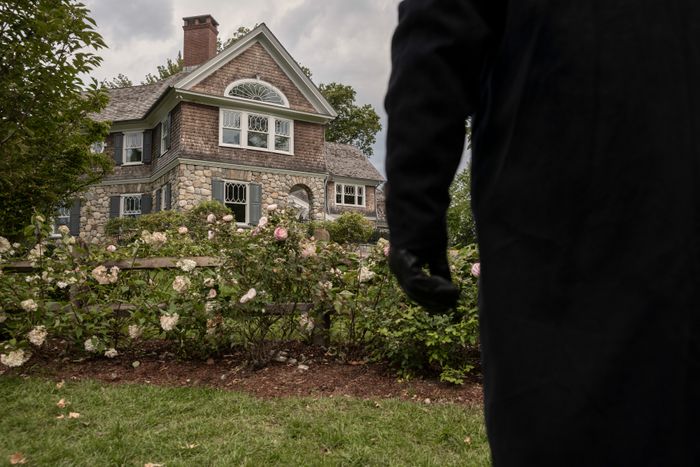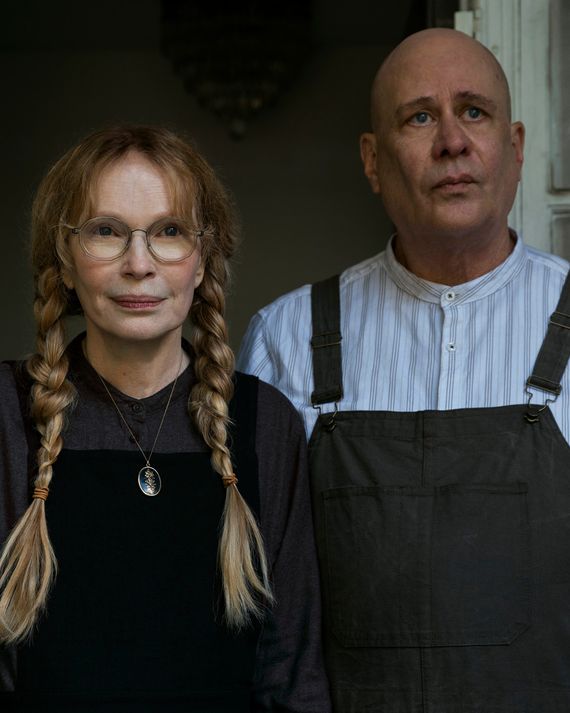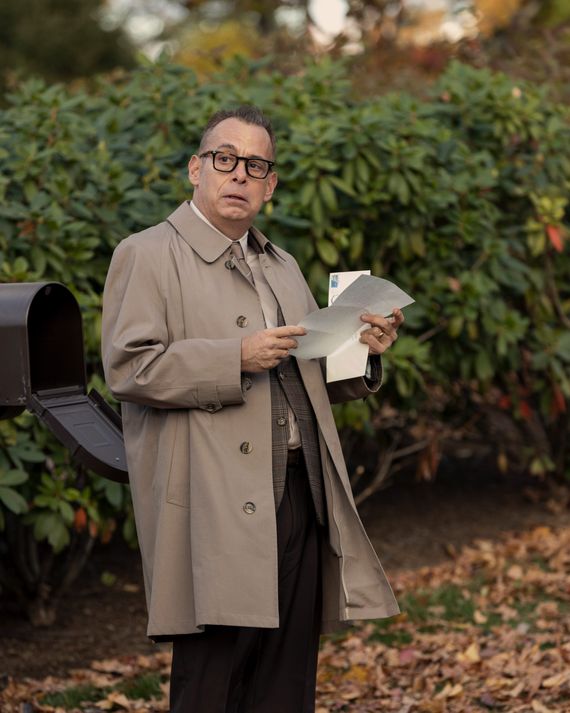
The neighbors in Netflix’s The Watcher are displeased. The Brannocks, a family that recently moved from Manhattan to the Boulevard in Westfield, New Jersey — the town’s most desirable street — are renovating their house. Their design choices are especially offensive to Pearl Winslow, an elderly neighbor (played by Mia Farrow) who looks like she’s walked out of Grant Wood’s American Gothic painting. “Butcher-block countertops? Are you turning your house into a delicatessen?” she sneers at Dean Brannock (Bobby Cannavale) in episode six. “I have never seen anyone spend so much money making a house look so awful.”
But the Brannock family is dealing with something more dangerous than a rude neighbor. Dean and his wife Nora Brannock (Naomi Watts) are receiving menacing letters signed by someone who calls themselves “The Watcher,” and they spend most of the series desperately trying to figure out who that is. The show, which premiered on October 13, is based on the true story of the Broaddus family, who were forced to abandon their six-bedroom dream home in Westfield after receiving those letters (which are read verbatim in the series), as detailed in a 2018 New York feature by Reeves Wiedeman. In both the article and the show, the mystery of who is watching the couple and their children through “all the windows and doors” of the house, as a letter reads, is never solved. In Ryan Murphy’s adaptation, the potential suspects include Pearl and her fellow historic-home enthusiasts, who make up the three-person Westfield Preservation Society. After all, they think it’s okay to break into someone’s home to admire a dumbwaiter and smash windows they don’t think are architecturally appropriate. As another member of the society says during a meeting, they are “very interested in keeping this town the way that it ought to be.”


It’s typical Ryan Murphy to take things to extremes, so it isn’t that much of a stretch for him to cast preservationists, who often have a self-righteous streak, as villains. They have their real-world counterparts in trad-arch crusaders — people who hold up classical European architecture as a symbol of the traditional values they want to see in society and view modern architecture as a threat to the way things “ought to be.” Most recently, they had their biggest champion in the White House, when Donald Trump signed a “Make Federal Buildings Beautiful Again” executive order in 2020, and classical-architecture-themed Twitter accounts that idolize European buildings became a magnet for white nationalists. The Watcher’s Westfield Preservation Society is organized around a similar desire: to maintain the traditional values they believe their neighborhood represents.
But would a group of quirky, overzealous preservationists who gush over turrets and ornamental plaster turn violent? It seems likely. When Pearl learns that her brother, Jasper, smashed the new glass windows ordered by the Brannocks, she says approvingly, “Six-by-six windows on a Queen Anne is a travesty.” We hear more nostalgia for the past from “John,” whom we first meet in the Brannocks’ kitchen making himself a sandwich. He introduces himself as the building inspector and starts to ask Dean, “Are you a Christian family?” When Dean says they don’t go to church, John sighs in disapproval. “The way the world is now, all of civilization is just burning down,” he says. Then he adds, “When I was a kid, nobody locked their doors and everyone went to church. Now everyone locks their doors and no one goes back to church. I don’t think that’s a coincidence.” It’s a familiar lament about societal collapse often forwarded by conservatives. It turns out soon after that John is not the building inspector, and may in fact be John Graff, a murderous former resident who killed his wife and children and disappeared after. Could he be The Watcher? It seems possible when Dean and Nora discover a tunnel that leads to a neighbor’s house and catch someone seemingly living in an underground room. They never see his face, but the audience does. It’s John, and he exits the tunnel through Pearl’s house. “They’re onto us!” he says when Pearl opens the door.
The real-life Broaddus family did not have an underground tunnel nor did they undertake any dramatic renovations. The local historical society also left them alone early on in their short tenure at the house. What the Broadduses experienced was something more mundane: “a clear undertone that the neighborhood was one way for a long time but new money has come in and is changing things,” Wiedeman told me. The real architectural drama happened only after the family decided to list the home and, after getting no offers, considered selling to a developer and subdividing the lot, which would require a zoning variance. There was a huge outcry from the Westfield Historic Commission and the neighbors on the block. Rather than preservation, “it was more about protecting their property values,” Wiedeman says. “They wanted the neighborhood to look pretty.” The society, for its part, had this to say about its fictionalized portrayal in the drama: “Mia Farrow’s character is an outdated caricature of the preservationist as a reactionary scold who bears no resemblance to anyone on our diverse, multigenerational commission,” says Jennifer Jaruzelski, the commission’s vice-chair. “We are far more interested in engaging residents through walking tours, homeowner awards, and informational ‘meet and greets.’”
But it turns out that the preservationist villain is not entirely an invention of Ryan Murphy’s amped-up brain. In a follow-up published this month, a new Watcher suspect emerges: a high-school English teacher who was obsessed with another historic house in Westfield and even wrote letters to it. He appears in the series as Roger Kaplan, a longtime Westfield resident who loves its old homes. A flashback shows him as a child admiring a hand-carved Newel post (he even uses the technical name!) and asking his friend, who is just a few years older, if she knows the woodworker. Dean immediately thinks Kaplan is a suspect. For a while, he looks likely, but in the end, Kaplan is revealed to be harmless and instead appears key in identifying who The Watcher really is.
The series, unlike real life, does wrap up with a more satisfactory ending that hints strongly toward at least one Watcher candidate. In the final episode, after the Brannocks have moved out, we can see the preservationist society is still obsessing over the countertops, this time because the new owner of 657 Boulevard, the real-estate agent Karen Calhoun (Jennifer Coolidge), has installed pink marble. In the meeting of the newly expanded society, as the group introduces themselves, we finally learn that “John” is William Webster, who works at the library, which has typewriters with the same font as the one in The Watcher’s letters. He says he’s lived in Westfield since 1995, the same year the Graff murders took place. Kaplan seems to recognize him and asks, “How’s your family?” William, who goes by “Bill,” replies sternly, “You know me from the library.” Kaplan gives him a suspicious glance, but the conversation moves on. As they discuss appropriate countertops for the house, Bill reveals that he has been paying close attention to 657 Boulevard for decades. “I do remember the countertops were original. They were polished Black walnut.” In one of the final scenes, we see that Calhoun has left the house (The Watcher tormented her too) and a new family has moved in. As they’re outside barbecuing, Bill is inside the house, watching them from a second-story window.






